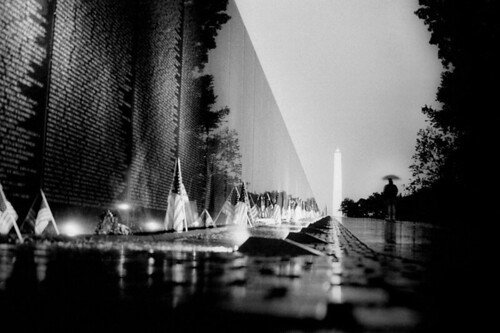Reviewing Kirk Savage’s Monument Wars: Washington D.C., the National Mall, and the Transformation of the Memorial Landscape for Religion Dispatches, Michael A. Elliot reflects on the profound changes undergone by the National Mall in the last two centuries:
More importantly, throughout the nineteenth-century the Mall existed as a carefully managed urban forest, a patchwork of trees and plants that were the envy of visitors from throughout the world. What changed in the early twentieth century was a shift from thinking about the Mall as set of public grounds to a public space. To travel on the “ground” was to be rooted in the earth, to experience a surrounding physical landscape in its variety. “Space,” on the other hand, is something that can be rationally controlled, and managed from above; cleared and filled with symbolic experience. So instead of paths winding through groves and gardens—and abutted by vibrant urban neighborhoods—we have the symmetrical, museum-ringed plots of the modern Mall, which functions as the medium of patriotic experience.
 Elliot goes on to echo Savage’s critique of the “dreadful” World War II memorial constructed in 2004:
Elliot goes on to echo Savage’s critique of the “dreadful” World War II memorial constructed in 2004:
As Savage notes, its proud, vertical pillars of white marble (adorned by sculpted wreaths) seems to be a deliberate response to the spare black granite of Lin’s Vietnam wall of names. The World War II Memorial names places, not people, and its visual idiom is a deliberately martial one: names of commanders, soaring eagles, didactic inscriptions. The tone of the Memorial is, as Savage puts it, “authoritarian certitude.” For the visitor, the roar of fountains drowns out any kind of deliberative reckoning, and necessarily raises the volume level. At the Lincoln Memorial, parents whisper to their children; here, they shout.
Read the entire review at Religion Dispatches.












